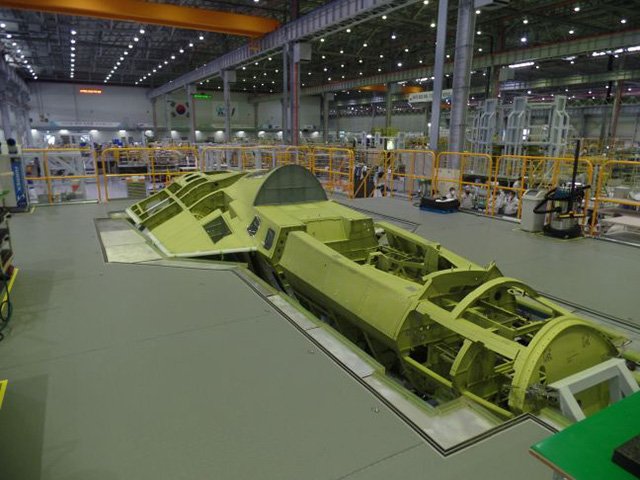sputniknews.com
South Korea Launches Corruption Investigation Into F-35, KF-X Deals
Sputnik
4-5 minutes
Asia & Pacific
03:44 25.07.2017(updated 10:36 25.07.2017) Get short URL
South Korean officials have opened an investigation into defense acquisition contracts for F-35 and KF-X aircraft pushed for by former President Park Geun-hye, who was sentenced to prison in March for abusing the power of her office, bribery, coercion and leaking classified information.
Defense Acquisition Program Administrator (DAPA) head Chang Myoung-jin has become the subject of a criminal investigation stemming from concerns of negligence and corruption, the Korea Times reported Monday. Chang was tapped by Park for his post shortly before Lockheed Martin and Seoul agreed to the F-35 deal worth at least $7 billion.
South Korea agreed to acquire 40 F-35A conventional take-off and landing aircraft on September 30, 2014. Washington signed off on the program to help its ally retire a fleet of outdated F-4 and F-5 aircraft.
One motivation for initiating the investigation stemmed from Washington bailing on its part of the F-35 deal. South Korean lawmakers wanted new aircraft to supplement its fleet while it worked on building an indigenous "4.5" generation aircraft. According to the Korea Times, Lockheed Martin said it would lend Seoul four key technologies from the F-35 — the active electronically scanned array (AESA) radar, infrared searching and tracking, the electronic optics targeting pod, and the radio frequency jammer — in exchange for procuring fifth-generation joint strike fighters instead of Boeing F-15SEs.
The Washington security establishment soured on the deal and never transferred the technology plans, citing national interest concerns. DAPA originally recommended acquiring F-15 aircraft. But shortly before the F-35 announcement, ex-National Security Officer and then-Defense Minister Kim Kwan-jin, a Park confidante, reportedly told advisors "we need to make a political decision."
The investigation team consisting of more than 100 prosecutorial personnel now interprets the “political decision” as a nudge from Park to choose the F-35s, the Korea Times noted. Without the technologies from Lockheed, the country’s effort to develop and field a South Korean-made fighter by 2026 has been significantly hampered. The project to develop the new generation of jets also received approximately $7.6 billion in government funding.
DAPA promised to create the technologies domestically for the KF-X they were supposed to receive from the US.
Chinese state media outlet Xinhua reported in November that effective lobbying by Lockheed Martin spurred an “abruptly announced” decision to deploy controversial Terminal High Altitude Area Defense (THAAD) missile batteries in South Korea. South Korean lawmaker Kim Jong-dae declared at the time, “If [Lockheed Martin] manages to accomplish the THAAD deployment by lobbying anyone possible, the rest is offered automatically." In conjunction with THAAD, Kim hypothesized that Lockheed-made Aegis-class ships, Patriot missiles, and F-35s would also be delivered to Seoul. "And you can easily guess who sits in the palm of Lockheed Martin’s hand," Kim said.
© REUTERS/ U.S. Department of Defense, Missile Defense Agency/Handout
“There have been a number of suspicions over the Park government's decision to change the model for the nation's next generation fighters from Boeing's F-15SE to Lockheed Martin's F-35,” lawmaker Hong Ihk-pyo said on July 18, adding that “thorough investigations are surely necessary.” The representative also questioned the viability of the program to build a domestically produced 4.5 generation jet.
A different lawmaker, An Min-suk, charged Lockheed with sending Park’s government bonuses in exchange for beneficial treatment during acquisitions decisions, the Korea Times report noted. Former National Security Officer — and close friend of Park — Choi Soon-sil was arrested when Park went down and is being included as a person of interest in the new probe. Lockheed Martin has denied charges that it received business favors as a result of Choi’s assistance.


















